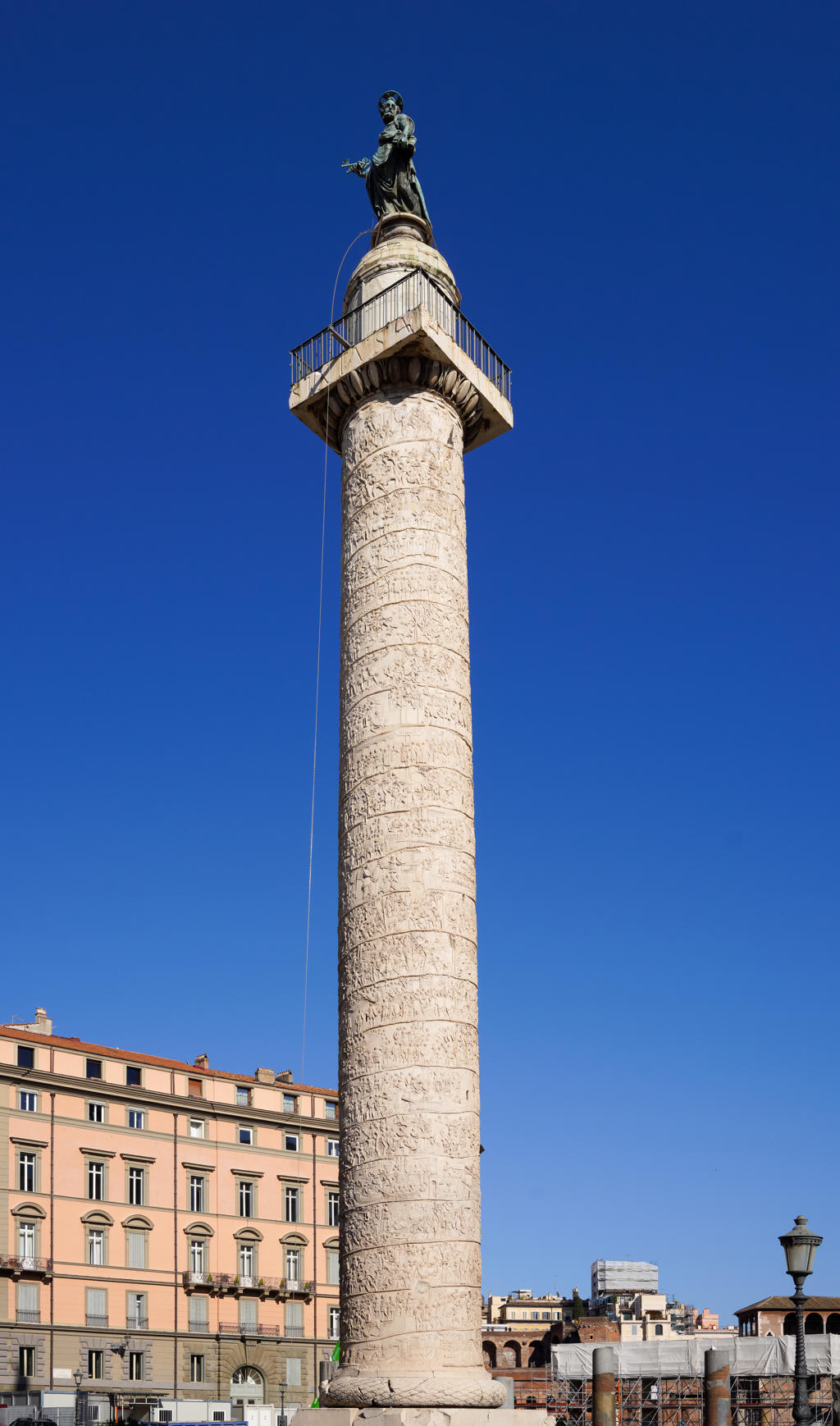About Trajan's Column
The towering Trajan's Column rises majestically, its spiral frieze wrapping around the shaft in a continuous narrative of Roman conquest. Standing at approximately 30 meters tall, the column is crowned by a statue of Saint Peter, a later addition replacing the original statue of Emperor Trajan. The intricate carvings depict the emperor’s victorious campaigns in the Dacian Wars, offering a detailed visual account of Roman military prowess and the emperor’s leadership. Each scene, meticulously carved into the marble, captures the drama and intensity of battle, the strategic planning of the Roman army, and the eventual triumph over the Dacians.
Constructed in 113 AD, Trajan's Column is not only a monument to military success but also a testament to the architectural and artistic achievements of ancient Rome. Designed by the architect Apollodorus of Damascus, the column stands in the heart of Trajan’s Forum, a grand complex that once served as a center of political and social life in Rome. The column’s detailed reliefs provide historians and visitors alike with invaluable insights into Roman warfare, engineering, and daily life during the height of the Roman Empire.
Right Where It Began: Trajan's Campaigns
The scenes depicted on Trajan's Column begin with the Roman army preparing for war, showcasing the logistical and strategic planning that characterized Roman military campaigns. Emperor Trajan is prominently featured, leading his troops with authority and vision. The narrative unfolds with the crossing of the Danube River, a feat of engineering achieved through the construction of a massive bridge, symbolizing the might and ingenuity of Roman engineering. The column’s carvings continue to illustrate key battles, negotiations, and the eventual subjugation of the Dacian people, highlighting Trajan’s role as both a military leader and a statesman.
Plan your perfect trip to Rome with Travo! Download now and start exploring.
Marks of Time: The Column's Enduring Presence
Over the centuries, Trajan's Column has withstood the test of time, surviving the fall of the Roman Empire and the subsequent transformations of the city. Its survival is a testament to the durability of Roman engineering and the reverence with which later generations have regarded this monument. The column’s presence in modern Rome serves as a bridge between the ancient and contemporary worlds, a reminder of the city’s imperial past amidst the bustling life of today’s capital.
Stories in Stone: The Frieze's Narrative
The spiral frieze of Trajan's Column is a masterpiece of storytelling, with over 150 scenes that bring to life the complexities of Roman-Dacian relations. The reliefs are not merely decorative; they serve as a historical document, providing insights into the tactics, armor, and weaponry of the Roman legions. The scenes also depict the daily lives of soldiers, the construction of fortifications, and the interactions between Romans and Dacians, offering a comprehensive view of the campaign’s impact on both conquerors and conquered.
Details That Speak: Hidden Meanings
Close examination of the column reveals subtle details that enhance its narrative power. The expressions on the faces of soldiers and civilians convey a range of emotions, from determination to despair, adding depth to the historical account. The depiction of Trajan himself, often shown addressing his troops or overseeing construction, reinforces his image as a capable and hands-on leader. The column’s base, which once housed Trajan’s ashes, further underscores its role as a monument to the emperor’s legacy, blending commemoration with historical record.
Living History: Trajan's Column Today
Today, Trajan's Column stands as a symbol of Rome’s enduring legacy, attracting scholars, tourists, and history enthusiasts from around the world. Its detailed carvings continue to be a source of fascination and study, offering insights into the art and history of ancient Rome. The column’s location in the heart of Rome, surrounded by the ruins of Trajan’s Forum, provides a tangible connection to the city’s imperial past, inviting visitors to reflect on the achievements and complexities of Roman civilization.

Map loading...
Location
Foro Traiano, 00187, Rome
